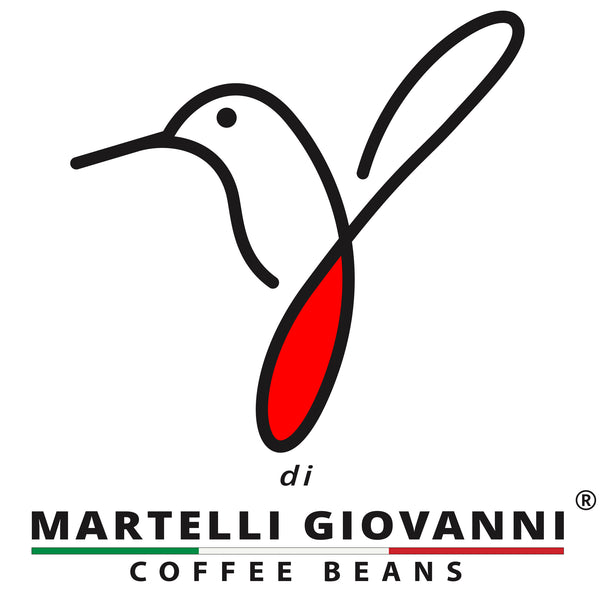Grind Styles
Grind Style is very important. Please make sure you read this article before you select the style.

The grind size of coffee beans can significantly affect the flavour, aroma, and quality of the brewed coffee. Different brewing methods require different grind sizes for optimal extraction. Here are some common types of coffee grind sizes with their explanations:
Whole Bean
This is the most common style that Coffee Shops buy as they are using a grinder for their Espresso Machines. A barista always prefers to have whole bean coffee for a reason:
Optimal Freshness and Flavour
Whole bean coffee ensures that the essential oils and aromatic compounds are preserved until the moment of brewing. This is crucial for espresso, where the complexity and depth of flavour are highly valued. A barista knows that the key to a perfect shot starts with freshly ground beans.
AeroPress Fine
The term "AeroPress fine" typically refers to the grind size of coffee beans that is suitable for brewing coffee with an AeroPress. The AeroPress is a manual coffee maker that uses air pressure to extract flavours from coffee grounds. The recommended grind size for an AeroPress is often a fine to medium-fine grind, although this can vary based on personal preference and specific brewing techniques.
A fine grind is similar in texture to table salt, and it allows for a quick extraction of flavours due to the increased surface area that comes into contact with water. However, if the grind is too fine, it could result in over-extraction, making the coffee taste bitter. On the other hand, a grind that is too coarse may result in under-extraction, leading to a weak or sour cup of coffee.
The AeroPress is known for its versatility, so you can experiment with different grind sizes to find the one that produces a cup of coffee that suits your taste.
Espresso
The term "espresso" refers to a fine grind size specifically tailored for making espresso by using Espresso Machines. Most coffee shops are using Espresso Machines. The texture is often compared to table salt, and it's finer than what you would use for most other brewing methods. The fine grind is essential for espresso because it allows for a high-pressure extraction in a short amount of time, usually 25 to 30 seconds. This results in a concentrated, rich, and full-bodied shot of espresso.
Here are some characteristics of an espresso grind:
Texture
- Fine, almost powdery but not as fine as powdered sugar
- Comparable to table salt
Extraction Time
- Typically 25 to 30 seconds for a single or double shot
Pressure
- Espresso machines usually operate at 9 to 15 bars of pressure
Flavor Profile
- A fine grind allows for a quick yet effective extraction, resulting in a complex, layered shot of espresso that can be both strong and nuanced.
It's important to note that the ideal grind size can vary depending on various factors, including the type of coffee bean, the specific espresso machine, and personal taste preferences. Many espresso enthusiasts recommend using a high-quality burr grinder for the most consistent and precise grind. Fine-tuning the grind size may be necessary to pull the perfect shot of espresso.
Filter
The term "filter" generally refers to a medium grind size used for drip coffee makers with flat or conical filters. This grind size is coarser than what you'd use for espresso but finer than what you'd use for French Press. The texture is often compared to sand.
Characteristics of Filter Grind:
Texture
- Medium coarseness, similar to sand
Brewing Time
- Typically 4 to 5 minutes in a drip coffee maker
Flavor Profile
- A medium grind allows for a balanced extraction, resulting in a well-rounded cup of coffee that is neither too bitter nor too sour.
Common Uses
- Drip coffee makers with flat bottom filters
- Some pour-over methods
- Siphon coffee makers
- AeroPress (with a longer extraction time)
The medium grind size is versatile and can work well for various brewing methods, but it is most commonly associated with drip coffee makers that use paper or metal filters. As always, you may need to adjust the grind size slightly to suit your specific brewing method and taste preferences.
French Press (Cafetiere)
The term "French Press grind" refers to a coarse grind size specifically suited for brewing coffee in a French Press, also known as a Press Pot or Plunger Pot. The coarser grind is essential for this brewing method because it allows for a longer extraction time without over-extracting the coffee, which could make it bitter.
Characteristics of French Press Grind:
Texture
- Coarse, similar to breadcrumbs or sea salt
Brewing Time
- Typically 4 to 5 minutes
Pressure
- No pressure is applied; the coffee steeps in hot water
Flavour Profile
- A coarse grind and longer steeping time allow for a full-bodied, rich, and robust cup of coffee.
Common Uses
- French Press
- Percolators
- Cold brew (although some prefer an even coarser grind for cold brew)
Using a grind that is too fine for a French Press can result in over-extraction, leading to a bitter taste. It can also cause the fine particles to pass through the mesh filter, making the coffee muddy or sludgy. Therefore, it's important to use the appropriate coarse grind size for optimal results.
As with other brewing methods, you may need to adjust the grind size slightly based on your specific French Press and personal taste preferences. A burr grinder is often recommended for achieving a consistent coarse grind.
Subscribe to our emails
Be the first to know about new collections and exclusive offers.
Shop Now
-

-Martelli Giovanni Premium Tea Leaves
Introducing Martelli Giovanni's Premium Quality Tea Leaves A Symphony of Flavors, A...











